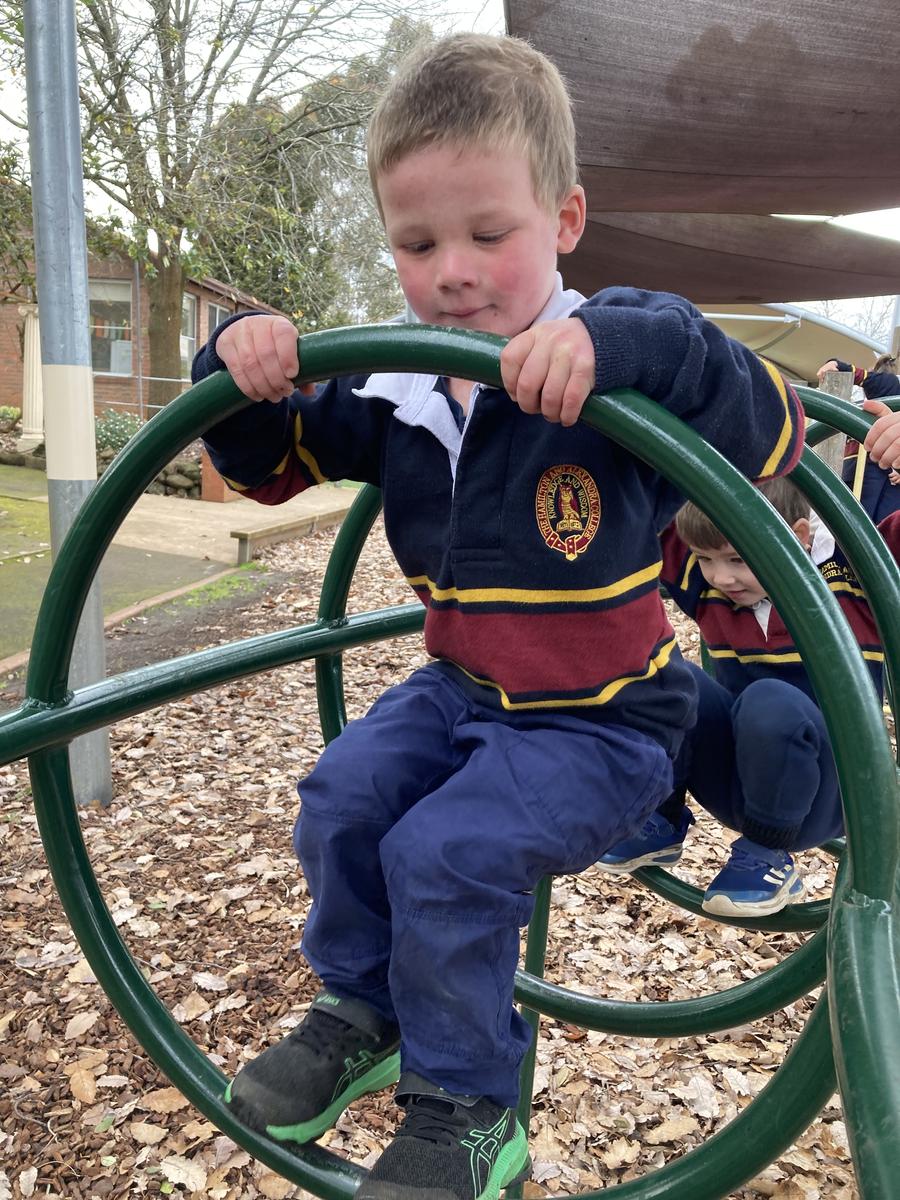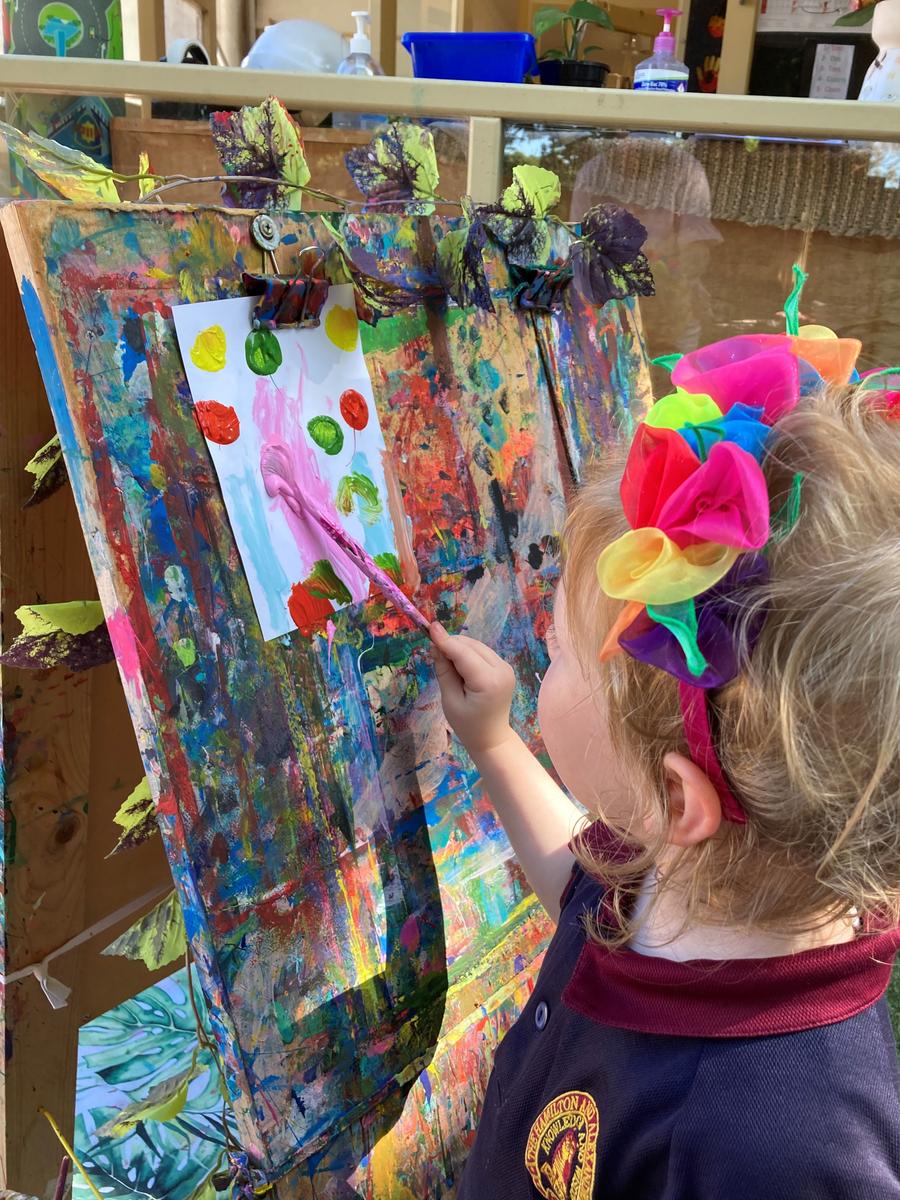Early Learning Centre

Risky Play
We all want children to be safe, not just for an hour or a day, but for a lifetime, which is why, at the Early Learning Centre, we allow children to play with self-selected risk. It's why we refer to all those bumps, scrapes, cuts and bruises as a learning bump or scrape. Each bandage, each ice pack, each body part that requires a loving rub or a fairy kiss, represents a moment that a child has challenged themselves in order to learn an aspect of the most important lesson there is; to keep themselves safe in this world; to learn their limits, to learn about consequences, and to learn about healing.
Defining risky play
Risky play is a natural part of children's play and is defined as a thrilling and exciting activity that involves a risk of physical injury; and play that provides opportunities for challenge, testing limits, exploring boundaries and learning about injury risk (Sandseter, 2007; Little & Wyver, 2008).
According to Ellen Beate Hansen Sandseter, a professor at Queen Maud University in Trondheim, Norway, there are six different categories of risky play:
- Great heights: Children climb trees and other structures to scary heights, from which they gain a birds-eye view of the world and the thrilling feeling of I did it!
- Rapid speeds: Children swing on vines, ropes or playground swings; slide on sleds, skates or playground slides; shoot down rapids on logs or boats; and ride bikes, skateboards and other devices fast enough to produce the thrill of almost, but not quite, losing control.
- Dangerous tools: Depending on the culture, children play with knives, bows and arrows, farm machinery (where work and play combine), or other tools known to be potentially dangerous. There's great satisfaction in being trusted to handle such tools, but also a thrill in controlling them, knowing that a mistake could hurt.
- Dangerous elements: Children love to play with fire, or in and around deep bodies of water, both which pose some danger.
- Rough and tumble: Children everywhere chase one another around and fight playfully, and they typically prefer being in the most vulnerable position - the one being chased or the one underneath in wrestling (the position that involves the most risk of being hurt and requires the most skill to overcome).
- Disappearing/getting lost: Little children play hide and seek and experience the thrill of temporary, scary separation from their companions. Older ones venture off, on their own, away from adults, into territories that to them are new and filled with imagined dangers, including the danger of getting lost.
The benefits of risky play
Risky play is crucial to a child's development so it's important that teachers and parents don't prevent children from engaging in risky experiences and activities. Some of the key life-skill benefits to be gained from risky play include:
- Building resilience and persistence
- Balance and coordination - development of motor skills
- Awareness of the capabilities and limits of their own bodies
- The ability to assess and make judgement without risk
- Handling of tools safely and with purpose
- Understanding consequence to action
- Confidence and independence
- Resourcefulness
- Creativity and inventiveness
- Curiosity and wonder
- Problem solving
On the flip side, children who don't engage in risky play are more likely to be clumsy, less physically fit, have little control over motor skills, feel uncomfortable in their own body, have poor balance, a fear of rapid movement and will be less able to manage risk.
What about safety policies?
The approved early years learning framework for children aged birth to five years under the National Quality Framework, encourages learning environments that invite and encourage children to take risks. It also lists several key outcomes of early childhood, one of which being that children become strong in their social and emotional wellbeing through many aspects including accepting challenges and taking considered risks.
What challenge or risky activities does your child engage in?
Have a great week.
Frances O'Brien
Director Early Learning Centre



